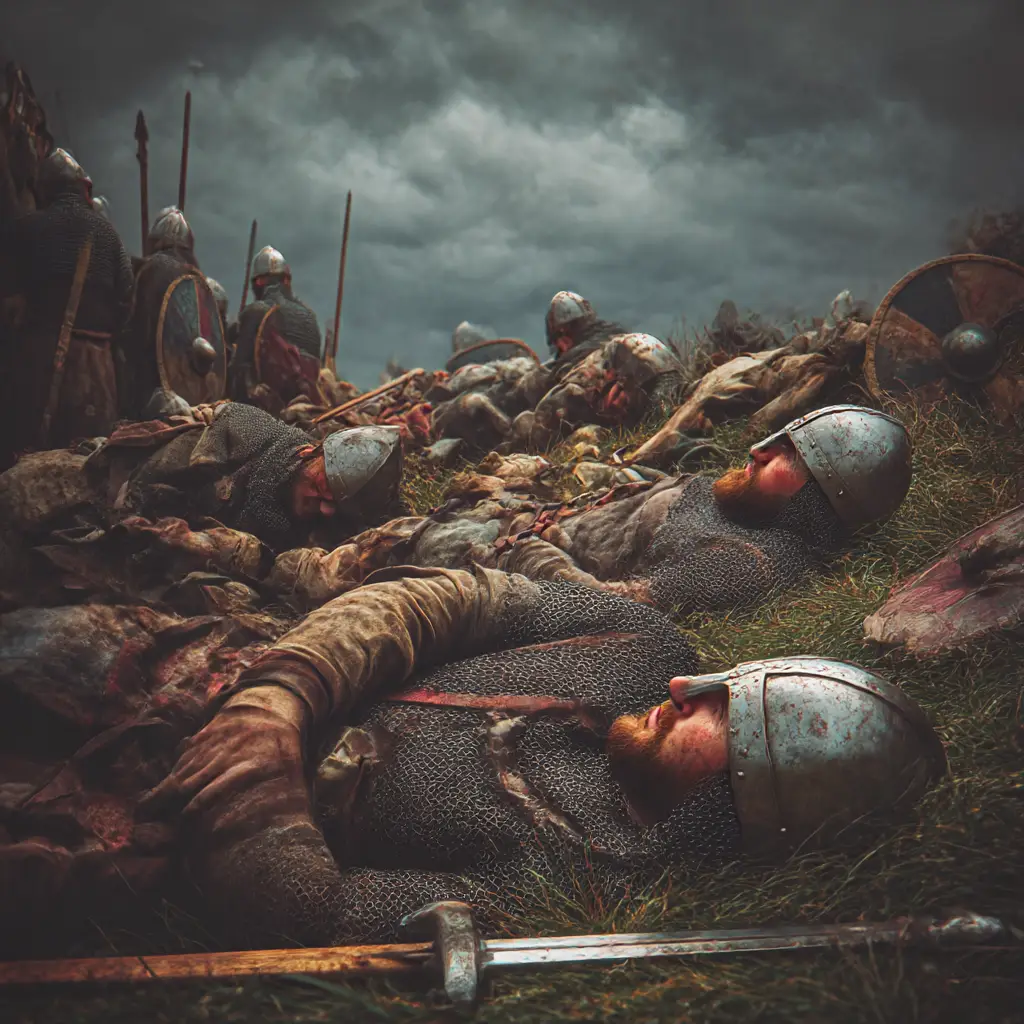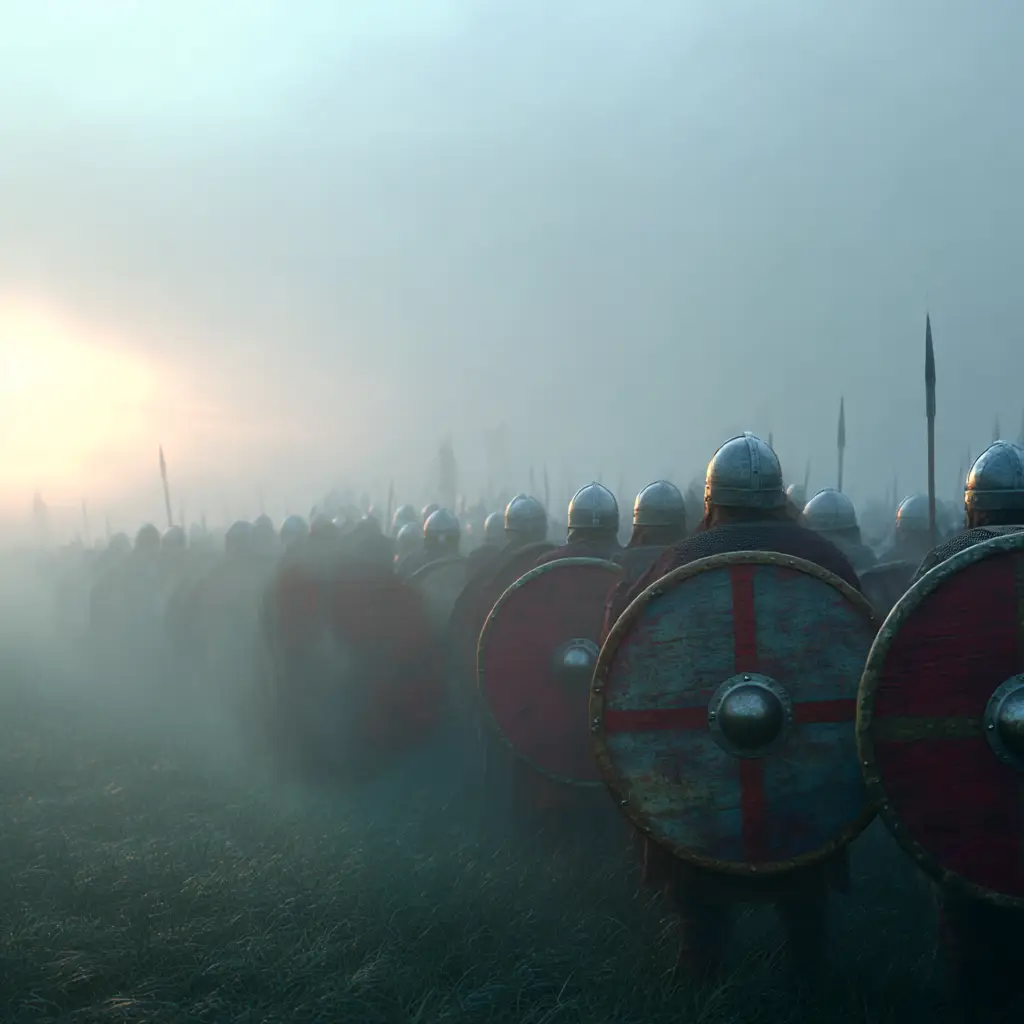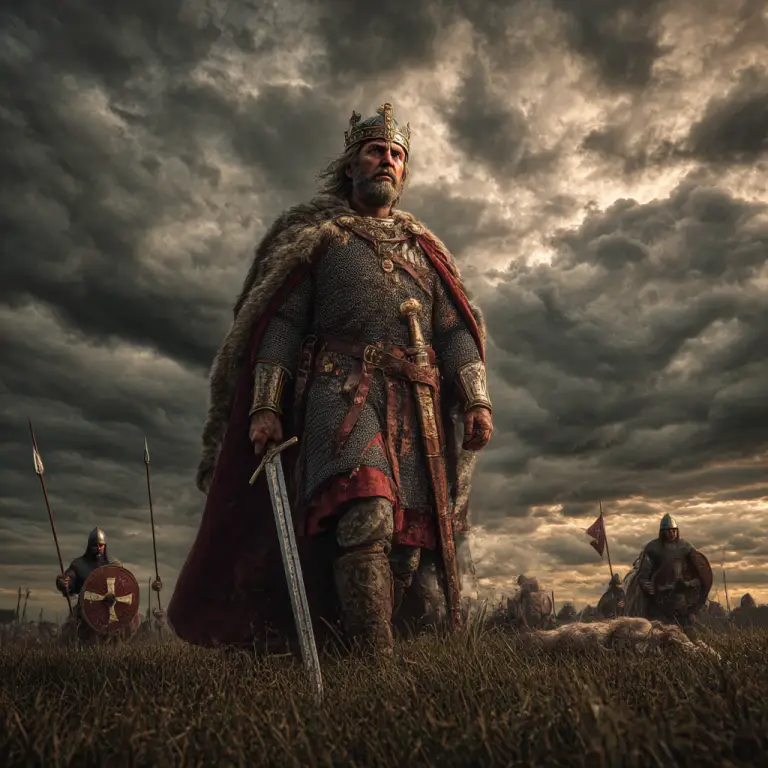The Vikings and the Battle of Edington
The Battle of Edington, fought in 878 AD, was a pivotal conflict between the invading Viking Great Heathen Army and the Anglo-Saxon forces of King Alfred the Great of Wessex. This decisive battle marked a turning point in the struggle for control over Anglo-Saxon England and significantly shaped the future of Viking settlement in Britain.
Background to the Conflict
By the late 9th century, Viking incursions into England had become increasingly aggressive and organised. The Great Heathen Army, a coalition of Norse warriors from Denmark, Norway, and Sweden, arrived in 865 AD with the aim of conquering and settling English territory, rather than simply raiding.
Under leaders such as Halfdan Ragnarsson and Guthrum the Old, the Vikings captured large parts of Northumbria, East Anglia, and Mercia. Only Wessex, under Alfred the Great, remained a significant Anglo-Saxon stronghold.
In early 878, Guthrum launched a surprise winter attack on Alfred’s stronghold at Chippenham, forcing the king into hiding in the marshes of Athelney in Somerset. From there, Alfred gathered support and prepared for a final stand.
The Viking Role at Edington
The Viking army at Edington was led by Guthrum, a seasoned and ambitious war leader. His forces were well-trained, battle-hardened, and equipped with a mix of traditional Norse weaponry—spears, axes, round shields, and swords. Many of these warriors had settled in the Danelaw, the Viking-controlled region of England, and viewed further conquest as both strategic and necessary for expanding their dominion.
At Edington, the Vikings fortified their position, confident in their previous victories. However, they underestimated the resilience of Alfred’s newly assembled fyrd (militia) and his ability to unite the scattered forces of Wessex.
The Battle Itself
The battle likely took place near Edington in Wiltshire, though the exact location is debated. Alfred’s forces, emboldened and better prepared, launched a full assault on the Viking encampment.
Fighting was intense and brutal, with both sides locked in close-quarters combat. Alfred’s leadership proved decisive—his men held firm, eventually breaking the Viking lines and forcing Guthrum’s army to retreat and barricade themselves within their fortified camp.
After a siege lasting several days, the Vikings surrendered due to lack of supplies and morale. This marked the end of major Viking military campaigns in Wessex.
Aftermath and Viking Impact
Guthrum was forced to accept terms which included baptism into Christianity—he was christened as Æthelstan—and a formal treaty with Alfred, often referred to as the Treaty of Wedmore. This agreement established boundaries between Alfred’s Wessex and the Viking-controlled Danelaw, laying the groundwork for a period of relative peace.
Although the battle did not end Viking influence in England, it marked a shift. The Norse presence transitioned from conquest to settlement, with more Vikings integrating into Anglo-Saxon society. The Danelaw persisted, especially in areas like East Anglia and the East Midlands, influencing local law, culture, and language.
Legacy of Viking Involvement at The Battle of Edington
The Battle of Edington remains one of the most significant clashes of the Viking Age in Britain. It represents both the peak and the beginning of the decline of Viking military dominance in southern England.
From warriors to settlers, the Vikings left a lasting legacy, but Edington symbolised a moment when their expansion was decisively halted. King Alfred’s victory preserved Anglo-Saxon rule in Wessex and ultimately paved the way for the unification of England under his successors.
For historians and enthusiasts alike, the battle stands as a key moment in understanding the balance of power between the Norse invaders and the Anglo-Saxon kingdoms during the Viking Age.



